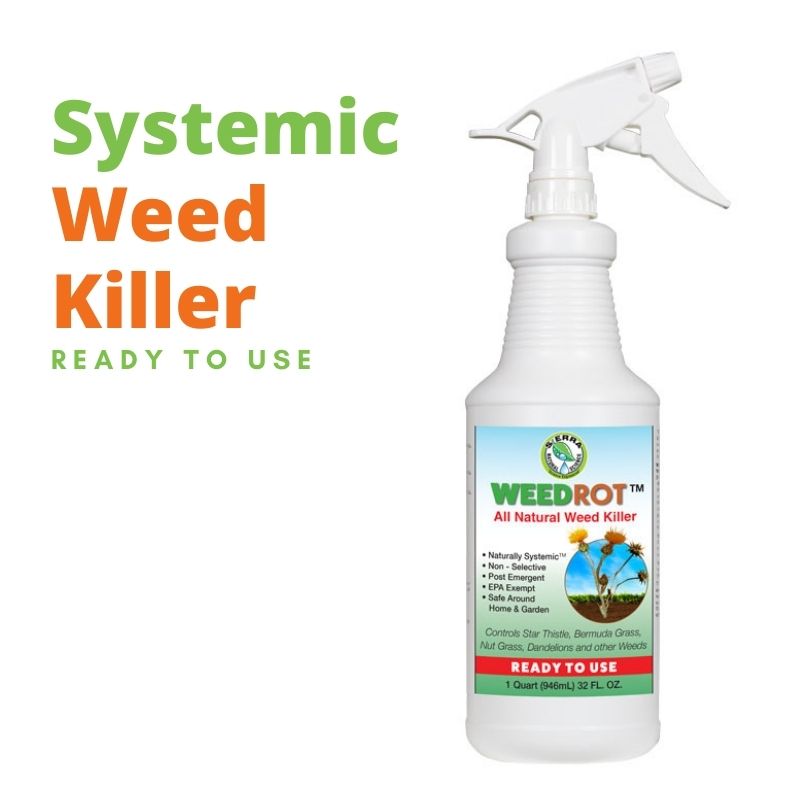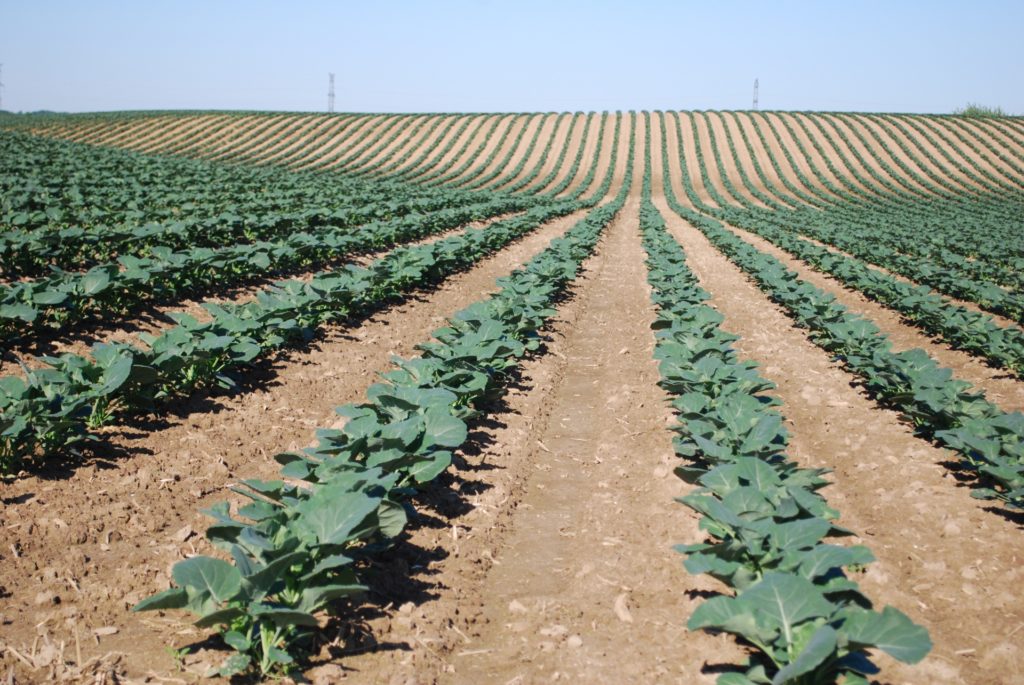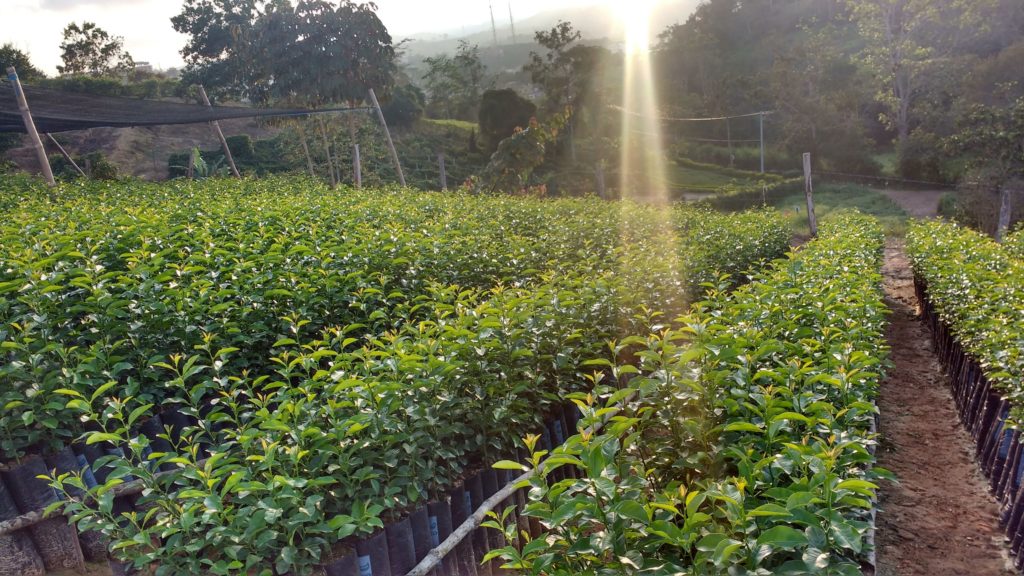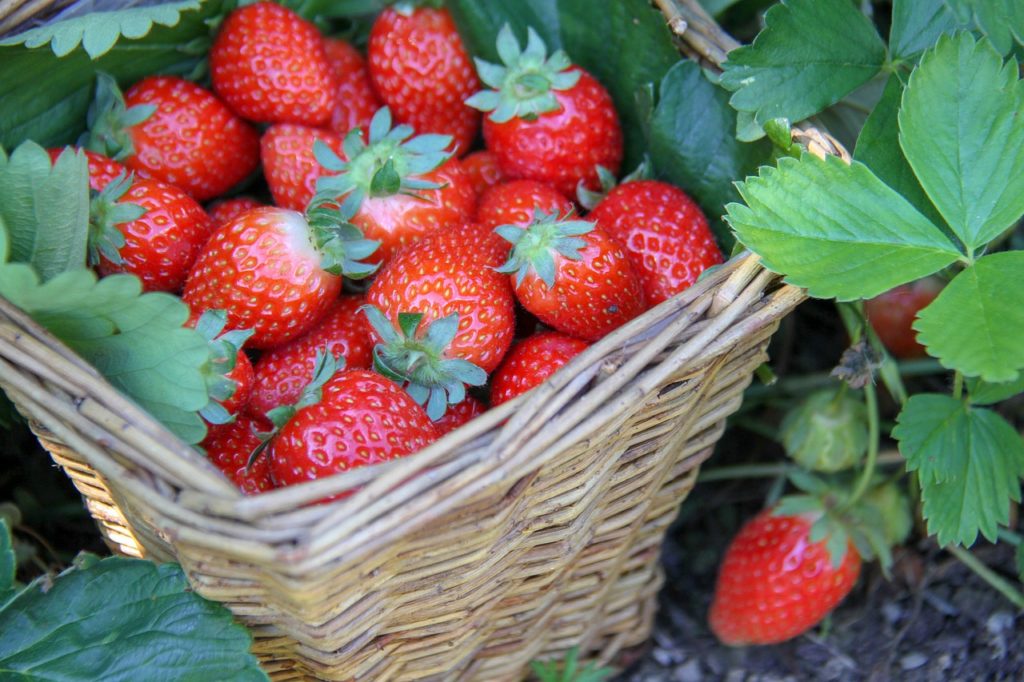
How Long Does It Take Weed Killer to Work?
February 28, 2021Weeds appear almost everywhere–mostly in large quantities that are not easy to eradicate. They take away space, sun, and nutrients that are essential for the care and survival of cultivated plants. They cause them to weaken and linger, or even die.
The fight against weeds is therefore an unavoidable part of growing your crop. It is usually a long fight and requires a lot of patience, effort and the use of special equipment and weed killers. We are often asked which weed killer works best, what is the best all purpose weed killer, what is the best weed killer concentrate, what is the best weed killer and also about weed killer safe for garden plants. In this article, you will find out how long does it take weed killer to work as well as the answer to other common questions.

Weed Killer RTU
Stops weeds from taking in nutrients, causing them to dry out
• Works in as little as 3 hours
• Effective on over 250 kinds of weeds and grass
• No Glysophate
• Safe around children and pets when used as directed
How Long Does It Take Weed Killer to Work?
The lawn is not just a recreational area as beautiful and dense grass is the showcase of your garden. But if your garden grows with weeds, the effect is reversed. That’s why you need to spray weed killer and to get good liquid lawn weed killer
Weeding is an effective and ecological way to control weeds on the lawn. Unfortunately, it is a labor-intensive and very energy-consuming method. Instead, you can spray the grass with products that fight the problem for you. Discover how long it takes for each specific type of weed-killer to kick in so that you can choose which method works best for you and learn the best spray weed killer option. Options include the contact weed killer, systemic weed killer, concentrate weed killer and more.

Organic or contact herbicides? Choose the right spraying for weed killers!
Organic herbicides that act on the leaves and stems of the plants to be treated are the best. The effects of spraying appear after just one week. On the other hand, herbicides that are absorbed by weed roots are not as recommended. The first effects take about 2 weeks to see. In addition, these chemicals stay in the soil for a very long time and their cleaning is nearly impossible as a result. This can unfortunately have a negative impact on future cultivation at this location.
Contact herbicides destroy only those parts of the weed that are in direct contact with each other after spraying. These agents are very effective if the spraying is thoroughly covered with weeds. If that is the case, weed killing can happen very quickly and last a much longer time. You can learn more about how long weed killer lasts here.
Weed killing agents break down on contact with the soil and require a more precise spraying as well as better sprayers. These sprayers are also not as accurate and long-lasting as system herbicides. However, what makes them attractive is that the first effects are already visible just a few hours after spraying. Learn more about how weed killer works here.
How Long Does It Take for Roundup to Work on Plants?
Roundup is the trade name of herbicide–a weed control agent in crops–produced by Monsanto. It is a weed control agent designed to be used with GMO crops designed to be resistant to the primary chemical, Glyphosate, which has been proven to be carcinogenic in multiple studies. Recently, Monsanto lost three different law suits regarding Roundup’s relation to causing cancer in the form of non-Hodgkin’s lymphoma.
The preparation is taken by the leaves of weeds and then moved to the roots of the plants, causing their extinction. The first symptoms of weed control are visible 7-14 days after the treatment. The plants die out after about 30 days. High temperature and humidity and strong sunlight accelerate the effect of the preparation. The preparation does not stay in the soil as it is moving and quickly decomposed by soil microorganisms. As previously stated, Roundup is cancer-causing, so we highly recommend avoiding this dangerous product and using one of our own organic weed killer formulas that are safe around kids, pets and the entire family.
Each weed killer has a different chemical structure
Herbicides are chemicals with complex chemical structures. Although each product has its own unique properties, weedkillers within the same family have similar chemical structures and many common characteristics.
Non-selective products are total weed killers, while selective products kill only certain weeds. Products in these two categories can be contact or organic herbicides. They can act in the soil at the root level or directly on the leaves.

- Foliar contact herbicides are absorbed by the leaves and burn them. The roots may not be controlled.
- Foliar organic herbicides are carried into the plant after penetration through the leaves. They destroy the entire plant including the root.
- Root organic herbicides are absorbed through the roots and migrate throughout the plant.
Weed control with Sierra Natural Science
This farm weed killer product is so highly effective, it destroys not only the above ground parts but also the roots of plants. Thus, it is used to destroy the weed that grows back easily and quickly around a plant.
Sierra Natural Science is widely used in agriculture and horticulture. It is used before sowing, before the crop is grown in the east, or just before harvesting. There are no restrictions of use for genetically modified and resistant crops.
Our weed killer is also used to destroy unwanted plants on sidewalks, driveways, or paths. It controls individual plants with great precision.
Beware of the phenomenon of accustoming
The need to optimize agricultural yields has always driven humans to use chemicals. The use of herbicides has very quickly become established in current crop and garden practices. In the case of a single, widespread application, plants develop resistance to the herbicide over time. This is resulting in a loss of efficacy of the herbicide as it’s an accustoming phenomenon.
Preserve Yields With Weed Killers For Plants
To preserve yields, farmers tend to increase herbicide rates with the best liquid weed killer concentrate, the SNS products. This type of weed control introduces chemical species that can be harmful to both the environment and to humans. This is the case of glyphosate. Its use as an active molecule was developed during the design of Roundup in the 1970s by John Franz, a researcher at Monsanto.
Degradation of Herbicides As Weed Killers for Plants
Herbicides degrade more or less slowly in ecosystems. A low persistence implies the repetition of treatments. Conversely, a high persistence generates long-lasting effects in the environment. Their bioaccumulations are dangerous for all living organisms through food chains, including:
- Water
- Soil
- Animal fats
- Plant tissues
How does Glyphosate work to control weeds around plants in your garden or lawn?
Choosing the best weed killer spray is therefore crucial. Glyphosate herbicides are absorbed through the leaves of the plants. Once on the leaf, the chemical prevents the production of a plant-specific enzyme as the plant needs it to survive. This enzyme is only found in plants, which is why glyphosate is non-toxic to animals and humans. Because the organic matter and clay in soils absorb glyphosate strongly, it is very unlikely that seeds, germinants, or roots will absorb glyphosate residues. Forest plant communities can therefore regenerate quickly after treatment operations.
Glyphosate herbicides are non-selective. They are systematically spread throughout the plant once they have penetrated the cuticle. However, as these products are usually very water soluble, they do not penetrate the waxy cuticles well. Instead, a detergent must be added to improve transfer through this protective barrier. Once in the plant, glyphosate works by inhibiting a very specific enzyme. The plant needs it to synthesize essential amino acids.

Restricted-entry interval (REI) after a weed killer treatment
The restricted-entry interval (REI) is the smallest period of time that must elapse between the time a pesticide is applied to an area or crop. It includes the time period during which people can move around that area without protective clothing or equipment.
Its purpose is to protect people and animals from pesticide poisoning. That could occur if they enter a treated area too soon after application of the pesticide. This is especially the case if they do not wear proper personal protective equipment.
All Sierra Natural Science products have a 0-Day REI, including our Weedrot weed killer product line such as our ready to use weed killer spray. That means you’re getting the safest possible product, while still effectively killing weeds. Having a plant safe weed killer is very important.
How can you get contaminated?
A person can come into contact with a pesticide in many ways. In general, post-application exposure to pesticides can occur through:
- Inhalation of spray fumes, powders or mists.
- Dermal contact with residues.
- Eye contact with steam, powder or mist, or by rubbing your eyes with your hand, glove or clothing contaminated with pesticide residues.
- Ingestion, such as eating food that has been treated or eating without first washing your hands.
Some herbicides may come in contact with the skin if you touch treated plants. This often happens while performing other activities such as weeding, thinning or brushing. Workers in a field may also lift residues that have accumulated on plants or on the ground in the form of a powder. This powder is then deposited on the workers’ skin and/or inhaled. People walking in treated areas may also breathe in vapors from a recent pesticide application.
Avoiding exposure to these residues is not always as easy as you might think. Beware of spraying neighboring properties as, on windy days, sprayed pesticides can drift surprising distances! If you smell solvent and/or see residue on the foliage of the plants you are handling, you should leave the area. Once you’re safe, make sure to ask the farmer if he or she has sprayed recently.

What are the factors that influence the restricted-entry interval (REI) after a weed killer treatment?
Different types of herbicides will need different post-application safety periods. Each pesticide may need the use of one or more restricted-entry intervals. These periods are established by taking into account the following:
- The toxicity of the active, poisonous ingredient of the herbicide.
- The composition of the residues after application of the product, when the latter is a mixture.
- The composition of the herbicide formulation itself.
- The conversion of the chemical to more toxic compounds under certain environmental conditions.
- The concentrate levels and method of application.
- The characteristics of the plants to which it is sprayed
- Weather conditions
- The type of operations carried out after application of the pesticide.
If more than one pesticide has been applied at the same time, then the longest restricted-entry interval must be respected.
Loss of efficiency of herbicides in cold and wet conditions
Today, many commercially available herbicides have recommendations for the interval between application and the next rain to ensure good performance as a weed killer product. This interval is often referred to as the rainfastness period. This characteristic is usually based on good growing conditions.
Under poor conditions, it is possible that the required interval may be longer. For many herbicides, rainfall shortly after application may reduce the activity of the herbicide.
How long does it take weed killer to work in Spring on garden plants?
Conditions are always unpredictable in the spring, so it can be frustrating for growers trying to implement an effective weed control program. It’s a proven fact: cold, wet weather can affect herbicide performance.
Sierra Natural Science brand agricultural herbicides work well in a wide range of temperatures. Better weed control is usually achieved when applications are made at 60-75°F and maintained for a few hours afterwards. At this temperature, most plants are actively growing and are not under heat stress.
At temperatures below 60ºF, plant growth slows down, thus slowing down the absorption and translocation of the herbicide. In such a situation, the time required to avoid rain entrainment is extended. Symptom development is delayed, but overall weed control performance is not compromised.

A frost that occurs soon after an application of a herbicide may also affect results. If a light frost is forecast, then you should have a window of at least 2 hours at over 50ºF to allow the product to penetrate the plant. When the temperature rises the next day, the translocation will begin again. If a severe frost is expected immediately after application, then you should avoid proceeding. If plant injury occurs before the product has been dispersed, then weed control performance may be reduced.
Other rules for herbicide use
Before gardening and applying each herbicide, you should first familiarize yourself with:
- Its use
- Recommended doses
- Protective and precautionary measures
Our advice is to not use more active substance than recommended in the instructions for use.
Recommended doses depend on the strength of the herbicide and the degree of weed infestation. The recommended standards from an ecological point of view should also be strictly adhered to.
When spraying weeds, remember that some plant protection products work very quickly, but only briefly and superficially. Others work slower, but much longer and more accurately. Some destroy selectively, while others destroy everything that is sprayed with them. The choice therefore depends solely on the situation and the current needs.
To learn more about the SNS Weedrot product line, please visit our page to discover why it’s the best organic weed killer on the market. You may also want to learn more about why organic weed killer is important for the planet’s future.

